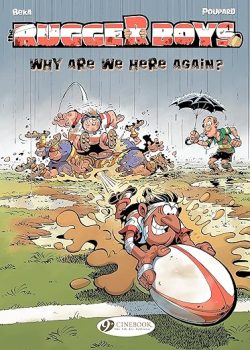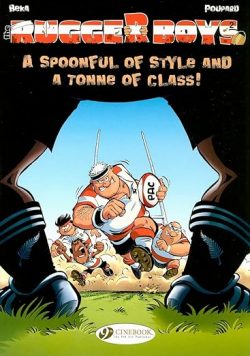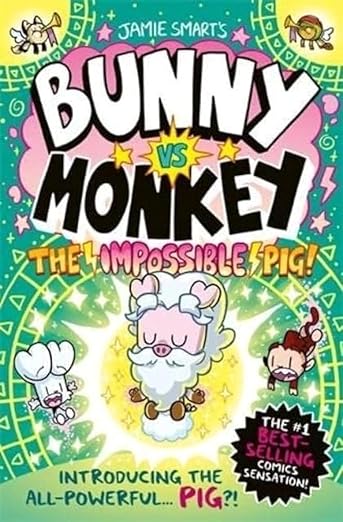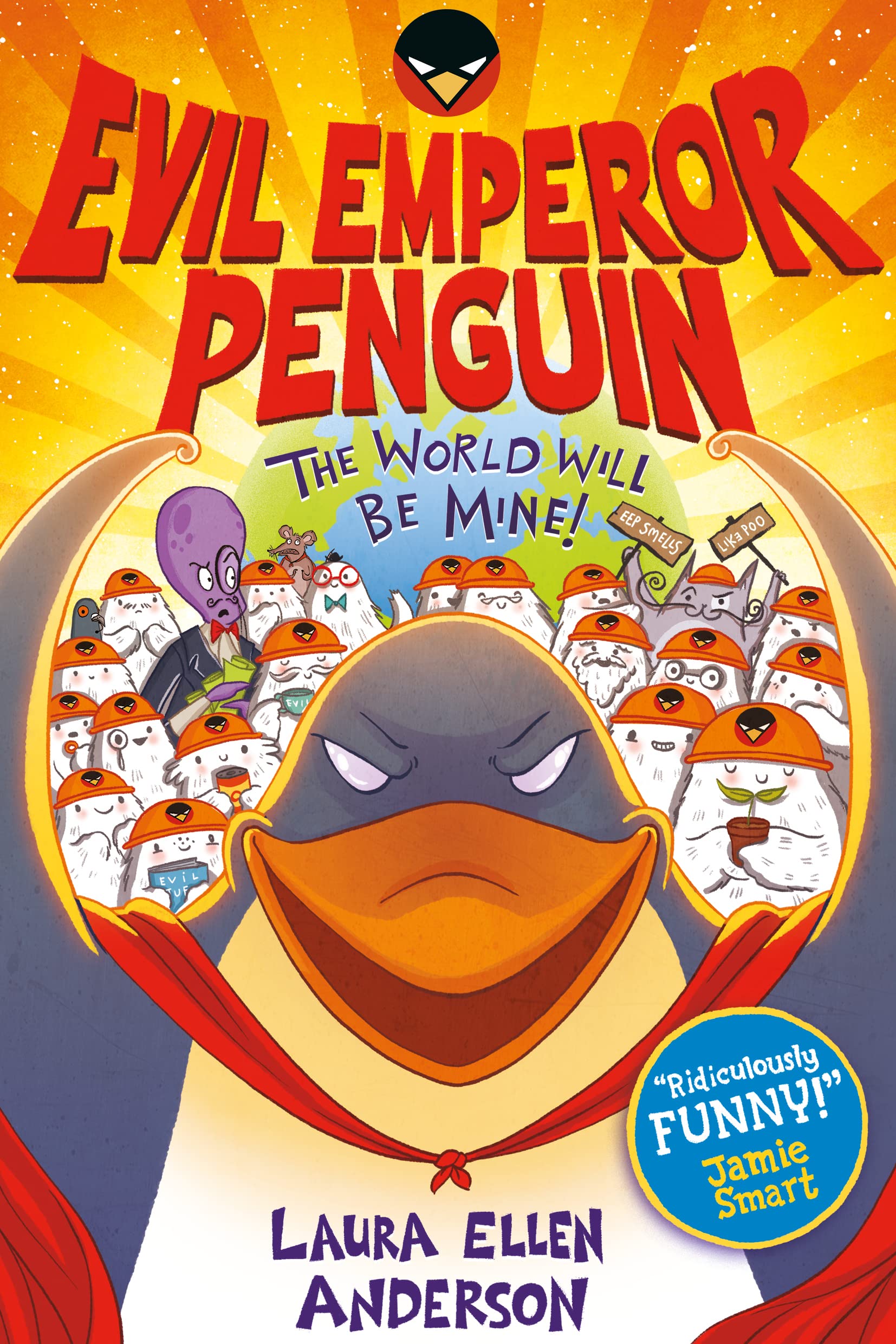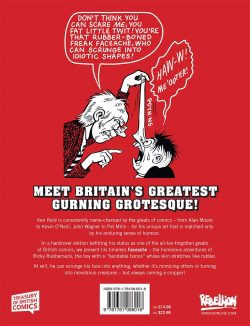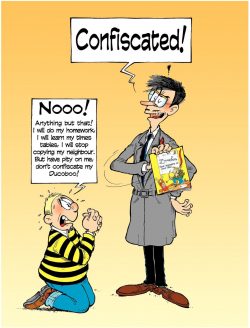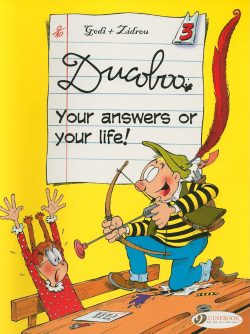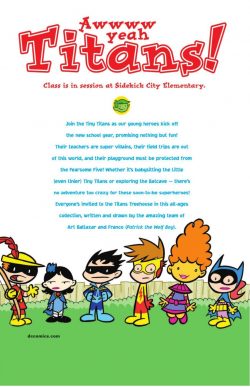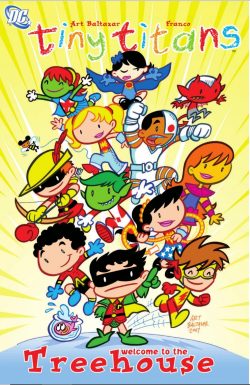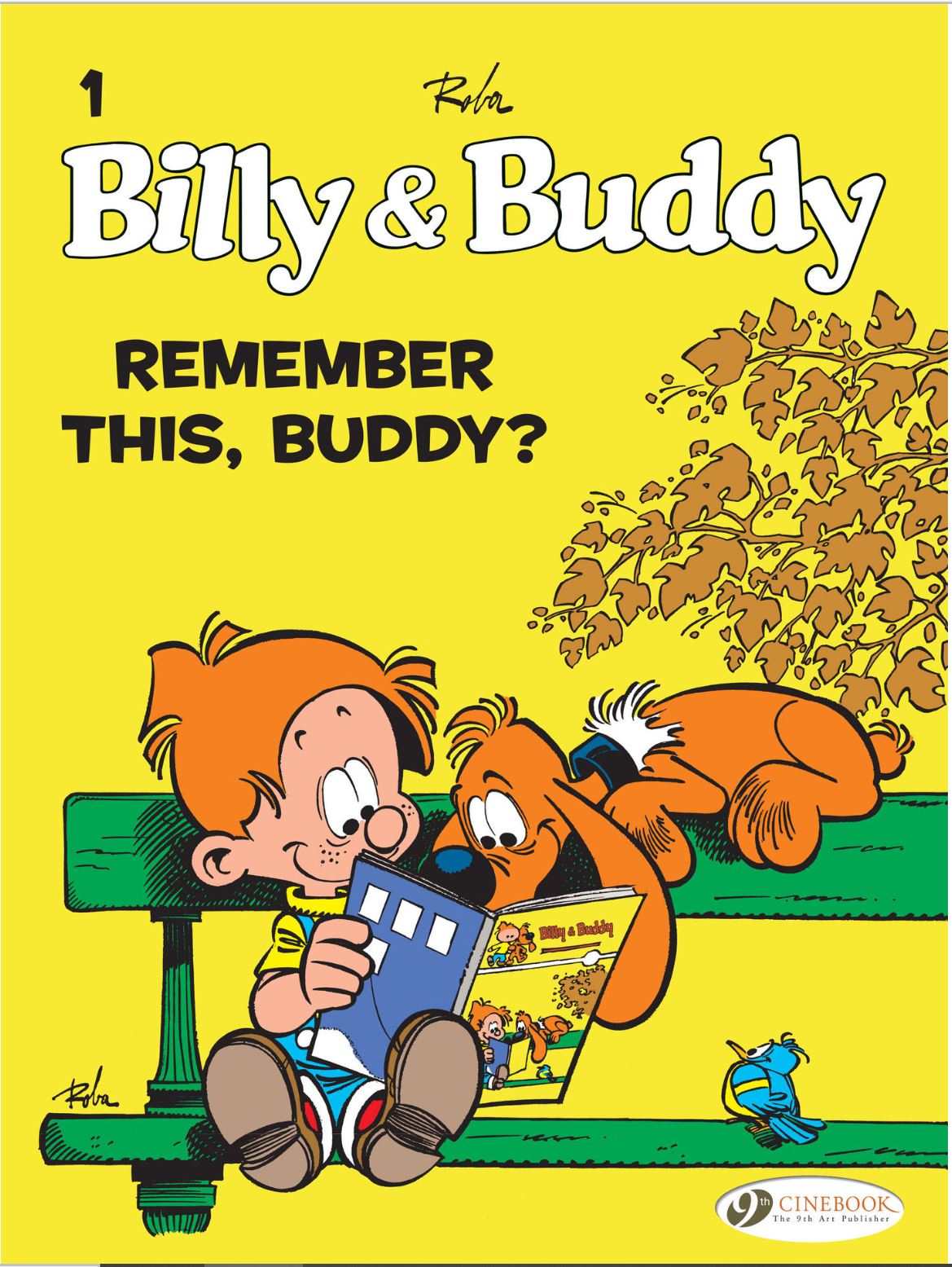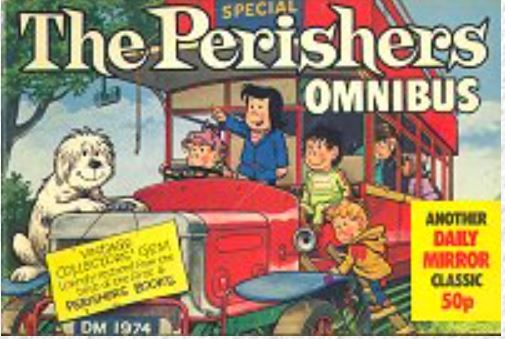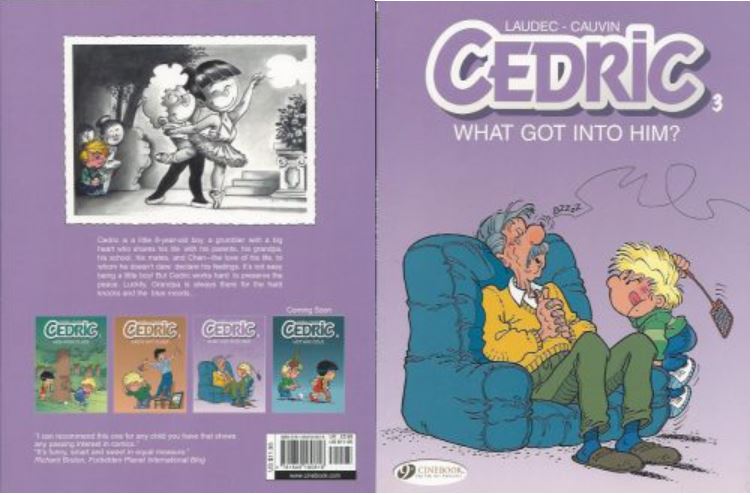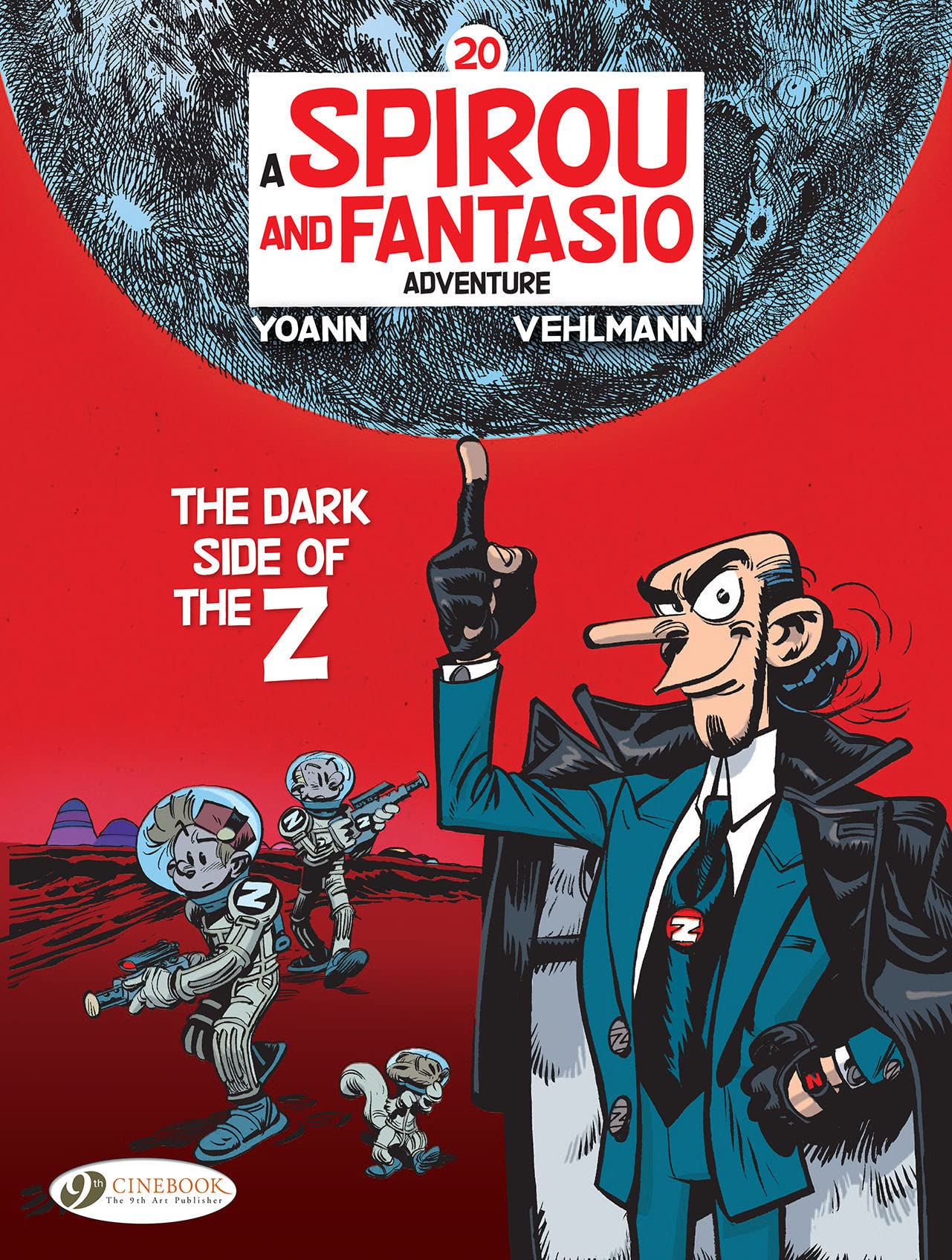
By Fabien Vehlmann & Yoann, designed by Fred Blanchard, colored by Hubert & translated by Jerome Saincantin (Cinebook)
ISBN: 978-1-80044-103-3 (Album PB/Digital edition)
Boyish hero Spirou (which translates as both “squirrel” and “mischievous” in the Walloon language) was created by French cartoonist Françoise Robert Velter AKA Rob-Vel. This was before the Second World War for Belgian publisher Éditions Dupuis in response to the phenomenal success of Hergé’s Tintin at rival outfit Casterman.
Soon-to-be legendary weekly comic Le Journal de Spirou launched on April 21st 1938 with a rival red-headed lad as lead feature in an anthology which bears his name to this day. The eponymous hero was a plucky bellboy/lift operator employed in the Moustique Hotel – a sly reference to the publisher’s premier periodical Le Moustique. His improbable adventures with pet squirrel Spip gradually evolved into far-reaching, surreal comedy dramas.
Spirou and his chums have helmed the magazine for most of its life, with a cohort of truly impressive creators carrying on Velter’s work, beginning with his wife Blanche “Davine” Dumoulin who took over the strip when her husband enlisted in 1939. She was assisted by Belgian artist Luc Lafnet until 1943, when Dupuis purchased all rights to the property, after which comic-strip prodigy Joseph Gillain (Jijé) took the helm. In 1946, his assistant André Franquin assumed the creative reins: gradually ditching the well-seasoned short gag vignettes format in favour of epic adventure serials. He also expanded the cast, introducing a broad band of engaging regulars and eventually creating phenomenally popular magic animal Marsupilami.
Franquin was followed by Jean-Claude Fournier who updated the feature over nine stirring adventures tapping into the rebellious, relevant zeitgeist of the times: offering tales of environmental concern, nuclear energy, drug cartels and repressive regimes.
By the 1980s, however, the series seemed outdated and lacking direction, so three separate creative teams alternated on it. Eventually overhauled and revitalised by Philippe Vandevelde (writing as Tome) and artist Jean-Richard Geurts – AKA Janry – adapting, referencing and in many ways returned to the beloved Franquin era, the strip found its second wind.
Their sterling efforts revived the floundering feature’s fortunes, generating 14 wonderful albums between 1984 and 1998. As the strip diversified into parallel strands (Spirou’s Childhood/Little Spirou and Guest-Creator Specials A Spirou Story By…), the team on the core feature were succeeded by Jean-David Morvan & José-Luis Munuera. Then Yoann & Vehlmann took over the never-ending procession of amazing adventures…
Multi-award-winning French comics author Fabien Vehlman was born in 1972, began his comics career in 1996 and has been favourably likened to René Goscinny. He’s probably still best known for Green Manor (illustrated by Denis Bodart), Seven Psychopaths with Sean Phillips, Seuls (drawn by Bruno Gazzotti and available in English as Alone), Wondertown with Benoit Feroumont and Isle of 1000,000 Graves with Jason.
Yoann Chivard was born in October 1971 and was drawing non-stop by age five. With qualifications in Plastic Arts and a degree in Communication from the Academy of Fine Arts in Angers, he became a poster advertising artist whilst just dabbling in comics. His creations include Phil Kaos and Dark Boris for British Indie publications Deadline and Inkling, Toto l’Ornithorynque, Nini Rezergoude, La Voleuse de Pere-Fauteuil, Ether Glister and Bob Marone and he has contributed to Trondheim & Sfar’s Donjon.
In 2006, Yoann was the first artist to produce a Spirou et Fantasio one shot Special. It was scripted by Vehlmann…
Cinebook have been publishing Spirou & Fantasio’s exploits since 2009, alternating between the various superb reinterpretations of Franquin and earlier efforts from the great man himself.
When Jijé handed Franquin the strip part-way through Spirou et la maison préfabriqué (LJdS #427, June 20th 1946), the new guy ran with it. Over two decades he enlarged the scope and horizons until it became purely his own. Almost every week fans would meet startling new characters like loyal comrade and rival Fantasio or crackpot inventor and Merlin of mushroom mechanics Pacôme Hégésippe Adélard Ladislas de Champignac – The Count of Champignac…
Spirou and Fantasio became globe-trotting journalists, travelling to dangerously exotic places, uncovering crimes, exploring the fantastic and clashing with a coterie of exotic arch-enemies such as Fantasio’s deranged and wicked cousin Zantafio and that maddest of scientists, Zorglub.
This old school chum and implacable rival of Champignac is an outrageous Bond-movie-tinged villain constantly targeting the Count. A brilliant engineer, his incredible machines are far less dangerous than his mind-controlling “Zorglwave” and his apparently unshakable hunger to conquer Earth and dominate the solar system from a base on the Moon…
This tale – originally in 2011 La face cachée du Z – opens with our happily argumentative chums repairing the collaterally damaged Champignac chateau yet again. Exhausted, they go to indoors to sleep… and wake up in a horrific and tawdry casino resort. Compounding the shocks are weird, painfully unpredictable tricks of gravity, as it’s apparently built only for the super-rich and on the moon!
Worst of all, explaining the transition is smugly sanctimonious old enemy Zorglub…
Still agonisingly hungry for his rival’s approval, the evil genius blathers on about his triumphs and his Great Masterwork since last seen (in volume 18’s Attack of the Zordolts): escaping from dirty, dying Earth to the stars with hot Swedish science students Astrid and Lena. Now they’ve gone off together, leaving the science troll to carve out his interplanetary empire alone.
At least, he would be, if certain funding shortfalls hadn’t forced him into bed with One-percenters who think his citadel could be the most exclusive resort off Earth…
Zorglub still needs to be the virtuous Architect of Humanity’s Future, but the people he has are nothing like the ones he wants: bold Fantasio, ingenious Spirou and brilliant ethically pristine Pacôme de Champignac…
That’s why – for the most logical and moral reasons – he drugged and abducted them…
Without question, the lunar outpost is a technological wonder, with advances and advantages even the kidnapped admire, but the beloved holy Science is being increasingly sidelined, for bigger and better gambling rooms, ski slopes, surfing beaches, sports complexes, nature sideshows and glitzy restaurants.
It does not go down well when Spirou points out that Zorglub could have cleaned up and saved Earth for less money and effort…
Further debate is forestalled when a solar flare is announced and Spirou refuses to join everyone else in radiation-shielded shelters until he recovers his wandering wild pal Spip. Locked out, our hero spectacularly finds a way to survive the cosmic storm, but it’s not for a while that we realise it’s come at a severe mutagenic cost…
The pauper lad’s suicide run across the resort’s attractions was televised and has made him a minor celebrity amongst the movie stars like Blythe Prejlowieky (who soon seduces the kid for her own shocking purposes!), overly-competitive sporting gods like Mike Adibox, faceless money-moguls and flagrantly ostentatious oligarchs such as Igor. Not so much impressed as cautious is the investors’ appointed fixer and ultimate mercenary Poppy Bronco. He’s recognized something in the survivor that bodes badly for all…
The sun starts setting on the project after Champignac chides Zorglub for the worthlessness of his achievements and surrendering of his principled dreams. It coincides with a series of potentially lethal sabotage attempts and – defined by true devotion to their precious skins – the one-percenters commandeer the transport back to Earth, with only few such as Blyth and Igor choosing to stay behind with the peons and paid staff…
Finally rid of his annoying paymasters, Zorglub then executes his long-term plans but is completely unprepared for what happens to Spirou when the lunar night begins. Bronco isn’t though and organises a monster-hunt through the abandoned resort and across the moon…
The outcome is tense, gripping unexpected and so very To Be Continued.
Rocket-paced, action-packed, compellingly convoluted and with just the right blend of perfectly blending helter-skelter excitement and sheer daftness, The Dark Side of the Z is a terrific witty romp to delight devotees of easy-going adventure, drawn with beguiling style and seductive energy. This is pure cartoon gold, truly deserving of reaching the widest audience possible.
Original edition © Dupuis, 2011 by Vehlmann & Yoann. All rights reserved. English translation 2023 © Cinebook Ltd.

